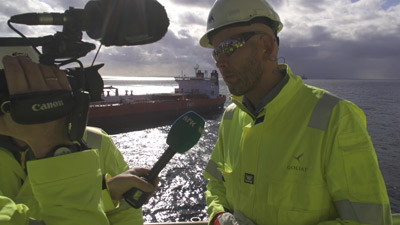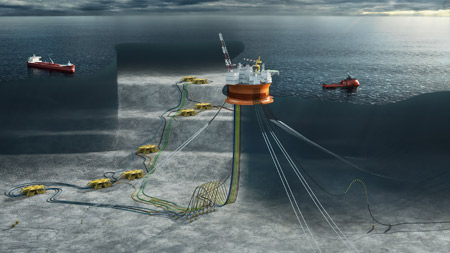On April 18, 2016, Goliat was the first oil field to come on stream in the Barents Sea. The field applies several ground-breaking technologies, which will also benefit the industry in future developments. The Goliat project development execution has contributed to substantial ripple effects, positively impacting the supplier industry in all of Norway, and Northern Norway in particular. Goliat operations will deliver considerable income both to the state and the partnership in the years to come.
 Photo credit: © Eni Norge
Photo credit: © Eni Norge
“This is a proud moment for everyone in Eni Norge. It is the culmination of years of hard work by many dedicated people. We are now entering into a new phase as operator on the Norwegian continental shelf. The start-up of production from Goliat is an important milestone in Eni’s growth strategy”, says Andreas Wulff, External Communication Manager.
Production at Goliat started safely in the evening of March 12, 2016, and was followed by a rapid production ramp-up of all wells. Full re-injection of associated gas into the reservoir has started and re-injection of produced water in order to minimize environmental impact will soon commence.
Eni, operating through its subsidiary Eni Norge AS, has been present in Norway since 1965. The company has interests in exploration licenses and producing fields such as Ekofisk, Norne, Åsgard, Heidrun, Kristin, Mikkel and Urd, with a total production in 2015 of 106,000 boed. With Goliat, eni Norge production will grow above 160,000 boed net to Eni.
 Eni Goliat illustration overview. Credit: © Eni Norge.
Eni Goliat illustration overview. Credit: © Eni Norge.
The platform has a production capacity of 100,000 barrels of oil per day and storage capacity of 950.000 barrels. Its estimated recoverable reserves are ca 180 million barrels of oil. Field life is currently estimated to 20 years, with significant upside already identified.

